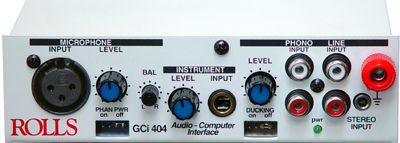

The new Core 2 Duo processors have been generating a lot of buzz, so I thought it might be time to build a new music computer around one. My old 3.2Ghz Prescott based system (overclocked to 3.46Ghz) generated a score of 37% on the Live 5 Performance Test. I've just assembled my Core 2 Duo system with the E6400 processor (no overclocking) and I'm getting a score of 20%. That drops to 12% if I use Live 6 with multiple processor support. Overclocked, at least one ableton forum poster is getting a score of 8% with this CPU. Several websites have overclocked the Core 2 Duo E6400 to over 3 Ghz.
My goal with this machine isto build a "one box" transportable computer suited to running Mobius in a modular host (like Bidule or Usine). "One box" meaning I wouldn't use any outboard gear: I'd plug my guitar directly into the front of the computer, and I'd have a stereo analog signal coming out the back. Here's the list of parts I ordered and the prices:
Building a music computer is an exercise in compromises: size, portability, robustness, computing power, noise, cost, etc. My needs are reasonably simple; I play my guitar and use the computer for everything else. My guitar plugs into my audio interface, and the outputs go to the speakers. Other than a Behringer FCB1010, the computer is my looping rig. I rarely (almost never) play outside my home studio, but I didn't want to completely eliminate the possibility of transporting the computer to a live gig. I also wanted something that would be quiet and unobtrusive in the studio.
Currently there seems to be a surprising amount of agreement that the Intel E6300 and E6400 Core 2 Duo processors are the best value for a high performance computer, and both overclock well. Scanning the Live 5 Performance Test finds these processors generating outstanding numbers. Here's a quote from another person who is using a Core 2 Duo: "I just upgraded from an old 478 P4 3.2 running at 3.6. The difference is (pardon my french) F*CKIN HUGE! I would've never imagined the difference. I just about had it with a new track of mine that was almost impossible to work with because the cpu maxed out all the time, almost from the very beginning to the very end. With the new cpu and some blazing fast ram, the track can play without even going over 30%. Also, the cpu is more than 20C cooler than before, and not even half the noise of before, even with stock fan. Amazing... Respect to Intel."

I've used several soundcards from RME, M-Audio, Creative Labs and Line 6, and every previous set up I've used has required some sort of external box: either a preamp or an external card that incorporates a preamp. I wanted to clean up my setup by eliminating that extra box. I find it somewhat surprising that there is no internal PCI sound card that comes with an instrument preamp, and there is only one preamp I'm aware that will mount inside of a computer case. The Rolls GCi404 not only has preamps for a mic and instrument, but it also offers a phono input with grounding posts and RIAA equalization. It mounts in a 3.5" drive bay and can be powered by a floppy drive cable. It offers several different outputs, but the only one that doesn't require running a cable out of the computer case is a 4 pin CD/aux type connector. This somewhat archaic hook up drastically limited my choice of sound cards. I only found three that allow ASIO recording from a 4 pin CD/Aux jack on the card: The M-Audio Revolution 5.1 and two other cards from Turtle Beach. This will be something of an experiment, but I can always go back to my Line 6 toneport if I don't like it. The Rolls GCi404 hasn't arrived yet, but the Revolution 5.1 seems great. Reducing the buffer to 64 samples dropped reported latency in Live to 2.9 ms, and only increased processor usage in the Live 5 test from 12% (at 512 samples) to 18%.